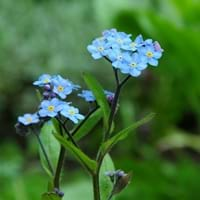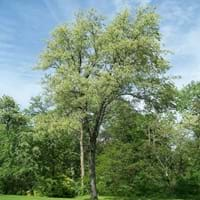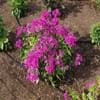Life Span
Annual and Perennial
Perennial
Type
Flowering Plants, Shrubs
Tree
Origin
Eastern Asia
North America, United States, Northeastern United States, Mid-Atlantic United States, Southeastern United States, North-Central United States, South-Central United States, Texas, Canada, Central America
Types
Bigleaf hydrangea, Hortensia, Smooth hydrangea, Oakleaf hydrangea, Annabelle
Not Available
Number of Varieties
Not Available
Habitat
Fields, gardens, meadows, rocky outcrops, waste ground, yards
Canyons, Dry areas, fencerows, Floodplains, Moist Soils, Old fields, open Woodlands, riparian zones, Roadsides, Thickets, Woodlands
USDA Hardiness Zone
Not Available
3-9
Sunset Zone
21,22
Not Available
Habit
Clump-Forming
Oval or Rounded
Flower Color
Blue, White
White
Flower Color Modifier
Bicolor
Bicolor
Fruit Color
Not Available
Dark Red, Dark Blue, Black
Leaf Color in Spring
Green, Gray Green
Green
Leaf Color in Summer
Green, Gray Green
Green, Dark Green
Leaf Color in Fall
Green, Gray Green
Yellow, Orange
Leaf Color in Winter
Light Green
Not Available
Leaf Shape
Lanceolate
Oblanceolate , Ovate
Plant Season
Spring, Summer
Spring, Summer, Fall
Sunlight
Full Sun, Partial Sun
Full Sun, Partial Sun
Type of Soil
Loam
Clay, Loam, Sand
The pH of Soil
Acidic, Neutral
Acidic, Neutral
Soil Drainage
Well drained
Average
Bloom Time
Early Spring, Spring, Late Spring, Early Summer, Summer, Late Summer
Spring, Late Spring
Tolerances
Not Available
Drought, Salt
Where to Plant?
Ground
Ground
How to Plant?
Divison, Seedlings
Root Division, Rooted stem cutting, Seedlings, Stem Cutting
Plant Maintenance
Medium
Medium
Watering Requirements
Do Not over Water
Average Water Needs
In Summer
Lots of watering
Lots of watering
In Spring
Moderate
Moderate
In Winter
Average Water
Average Water
Soil pH
Acidic, Neutral
Acidic, Neutral
Soil Type
Loam
Clay, Loam, Sand
Soil Drainage Capacity
Well drained
Average
Sun Exposure
Full Sun, Partial Sun
Full Sun, Partial Sun
Pruning
Remove damaged leaves, Remove dead branches, Remove dead leaves
Remove damaged leaves, Remove dead branches, Remove dead leaves
Fertilizers
All-Purpose Liquid Fertilizer
All-Purpose Liquid Fertilizer
Pests and Diseases
Red blotch
Red blotch
Plant Tolerance
Drought
Drought
Flower Petal Number
Single
Single
Foliage Texture
Medium
Medium
Foliage Sheen
Matte
Glossy
Attracts
Bees, Flies
Birds, Butterflies
Allergy
Chest tightness, Diarrhea, Dizziness, Nausea, Vomiting
coma, dilation of pupils, Gastric, Respiratory problems, weakness
Aesthetic Uses
Beautification, Cottage Garden, Ground Cover, Showy Purposes
Showy Purposes
Beauty Benefits
Not Available
Not Available
Environmental Uses
Air purification
Air purification, Nesting sites for birds, Shadow Tree, Shelter for wildlife, Wildlife
Medicinal Uses
Fever, Kidney problems, Urinary tract problems
Cough, Sedative, Tonic
Part of Plant Used
Flowers, Root
Fruits
Other Uses
Culinary use, Used as Ornamental plant
Used As Food, Used as Ornamental plant
Used As Indoor Plant
No
No
Used As Outdoor Plant
Yes
Yes
Garden Design
Bedding Plant, Cottage garden, Edible, Hanging Basket, Wildflower
Edible, Feature Plant, Shade Trees
Botanical Name
Myosotis arvensis
PRUNUS serotina
Common Name
Forget-Me-Not
Black Cherry
In Hindi
Forget-Me-Not
ब्लैक चेरी का पेड़
In German
Forget-Me-Not
Schwarz Kirschbaum
In French
Forget-Me-Not
Noir Cherry Tree
In Spanish
Arce japonés
Negro del cerezo
In Greek
Forget-Me-Not
Μαύρο Cherry Tree
In Portuguese
Forget-Me-Not
Árvore de cereja preta
In Polish
Forget-Me-Not
Czarny Cherry Tree
In Latin
Forget-Me-Not
Prunus serotina ligno
Phylum
Magnoliophyta
Magnoliophyta
Class
Magnoliopsida
Magnoliopsida
Family
Boraginaceae
Rosaceae
Clade
Not Available
Angiosperms, Eudicots, Rosids
Tribe
Not Available
Not Available
Subfamily
Not Available
Prunoideae
Number of Species
Not Available
Importance of Field Forget Me Not and Black Cherry
Want to have the most appropriate plant for your garden? You might want to know the importance of Field Forget Me Not and Black Cherry. Basically, these two plants vary in many aspects. Compare Field Forget Me Not and Black Cherry as they differ in many characteristics such as their life, care, benefits, facts, etc. Every gardener must at least have the slightest clue about the plants he wants to plant in his garden. Compare their benefits, which differ in many ways like facts and uses. The medicinal use of Field Forget Me Not is Fever, Kidney problems and Urinary tract problems whereas of Black Cherry is Cough, Sedative and Tonic. Field Forget Me Not has beauty benefits as follows: Not Available while Black Cherry has beauty benefits as follows: Not Available.
Compare Facts of Field Forget Me Not vs Black Cherry
How to choose the best garden plant for your garden depending upon its facts? Here garden plant comparison will help you to solve this query. Compare the facts of Field Forget Me Not vs Black Cherry and know which one to choose. As garden plants have benefits and other uses, allergy is also a major drawback of plants for some people. Allergic reactions of Field Forget Me Not are Chest tightness, Diarrhea, Dizziness, Nausea and Vomiting whereas of Black Cherry have coma, dilation of pupils, Gastric, Respiratory problems and weakness respectively. Having a fruit bearing plant in your garden can be a plus point of your garden. Field Forget Me Not has no showy fruits and Black Cherry has no showy fruits. Also Field Forget Me Not is not flowering and Black Cherry is not flowering . You can compare Field Forget Me Not and Black Cherry facts and facts of other plants too.





